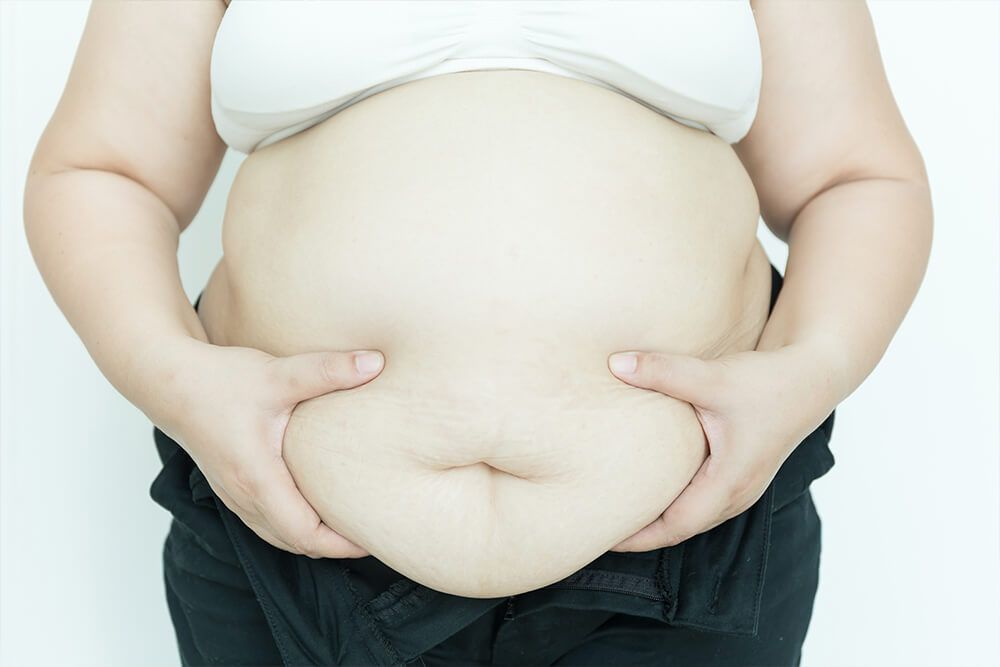
Obesity is a major risk factor for many chronic diseases which can lead to an early death. Not to mention, obesity places tremendous pressure on all of the joints in the body, increasing the risk of degenerative diseases of the knees, hips, and feet.
Lifestyle changes with a sensible diet and exercise are the best approach to help patients lose weight in a safe and maintainable manner. For people who are unable to change their lives and experience weight loss through other means, then bariatric surgery can be a wonderful method to help patients lose considerable weight.
As a plastic surgeon, I have the opportunity to see patients after they have lost an amazing amount of weight and have used this to champion new lifestyles which can eliminate diabetes, hypertension, sleep apnea, and often times can discontinue all medications which they previously were taking under a physician's care. However, I enter into the equation when the patient is now otherwise healthy and active, but they are unhappy because they are now prisoners in their own hanging skin fortresses.
People feel better, but they don't look better because of all of the hanging skin around their face, arms, breasts, abdomen, flanks, buttock, and thighs. Plastic surgeons have additional training and experience in these surgical rejuvenation procedures and are uniquely qualified to provide patients with a "get out of jail card" from their skin excess.
Unfortunately, many bariatric surgeons are trying to provide many of these procedures themselves for financial reasons. This can lead to less than desirable outcomes and even unnecessary deaths because they lack the training and the important principles of body contouring procedures, which can only be learned in a plastic and reconstructive surgical residency.
Another thing that gets in the way of patients experiencing the joys of post-bariatric surgical body contouring is who is going to pay for the procedure. First and foremost, any procedure which can be compensated by insurance must have a surgical code with a relative value scale attached to the procedure. The people who set up the coding (American Medical Association) have never evaluated plastic surgery procedures in the setting of massive weight loss. Therefore, even if an insurance company would "cover the procedure," it would in no way reflect the amount of time and effort by the surgeon to provide patients with this care. There are many techniques that are quite complicated and difficult to perform that are not taken into consideration with insurance reimbursement.
I have heard many patients say that this is not fair. My response to this is as follows: Patients who did not have the motivation to lose weight in the first place are the ones who get surgical weight loss procedures. If their body contouring procedures are covered by someone else, then what is the incentive for the patient to maintain their new lifestyle? If they have had to save their money for several expensive operations, that in summation equal the cost of an expensive car, then the patient is less likely to give up on their lifestyle in order to maintain their costly investment in themselves. I also tell my patients that an expensive new car devalues over time very quickly, but if you take an active interest in your new body it can last a long and meaningful time. People always act differently if they have some skin in the game (pun intended).
What are the procedures to make me look and feel better?
The surgical rejuvenation of the arms, breast, abdomen, flanks, buttocks, and legs are usually broken up into three distinct procedures. Each one takes around 6.5 to 7 hours to perform. As I said in the above paragraph, these are involved procedures with a tremendous amount of work to remove and reshape the skin, but the results make it worth it.
Circumferential Lower Body Lift with Gluteal Augmentation
The first procedure I routinely begin with is the circumferential lower body lift with gluteal augmentation with vascularized flaps from the flank region. This is the keystone area of the body and once this is corrected it allows me to make better aesthetic judgments about the breasts and legs. This procedure is actually three distinct operations performed at the same time: a tummy tuck, a flank-plasty with lateral thigh repositioning, and gluteal augmentation utilizing the skin of the muffin top and positioning the tissue into the gluteal region to enhance the buttock. Despite the long surgical time and the complex number of procedures performed, I almost always send the patient home that night and they actually do much better than staying in the hospital. All incisions are closed deeply, so no sutures need to be removed. There are four drains that stay around a week. We utilize a pain pump with a long-acting local anesthetic to block pain response, and everyone gets a blood thinner for five days to prevent blood clots. I generally inform patients it takes around two weeks to start feeling better, and after that time people begin to feel much better. This operation is a life-changing event and everyone is universally very happy.
Upper Body Lift (bilateral Brachioplasty with lateral chest wall reshaping and breast rejuvenation)
The second stage is usually a combined upper arm and lateral chest wall contouring procedure (otherwise known as an extended Brachioplasty). This is often blended with a breast lift with or without an implant. The Brachioplasty is a one-stage procedure with very few complications, and patients love the results despite the long scar from the elbow to the armpit and extending down the posterior lateral chest. However, the breast is almost always a two-stage procedure because the tissues after weight loss are very complicated with lots of unsupported hanging tissue that cannot be corrected in a one-stage manner. If the residual breast tissue is very thin, it may require an implant to help create shape and volume during the second stage.
Medial Thigh Lift
The last stage is typically the lateral thigh lift. In most cases, we perform aggressive liposuction in the area of the medial thigh, then resect the loose tissue left after the liposuction. The incision spans from the knee to the groin crease on the inner aspect of the leg. This allows us to transversely tighten the skin in this distribution, giving a much smoother, firmer leg. Just as in the arms, the operation is not nearly as difficult to recover from and patients can resume fairly normal activities in a week. This can allow patients to feel comfortable in shorts, dresses, and pants by unburdening them of their excess hanging skin.







